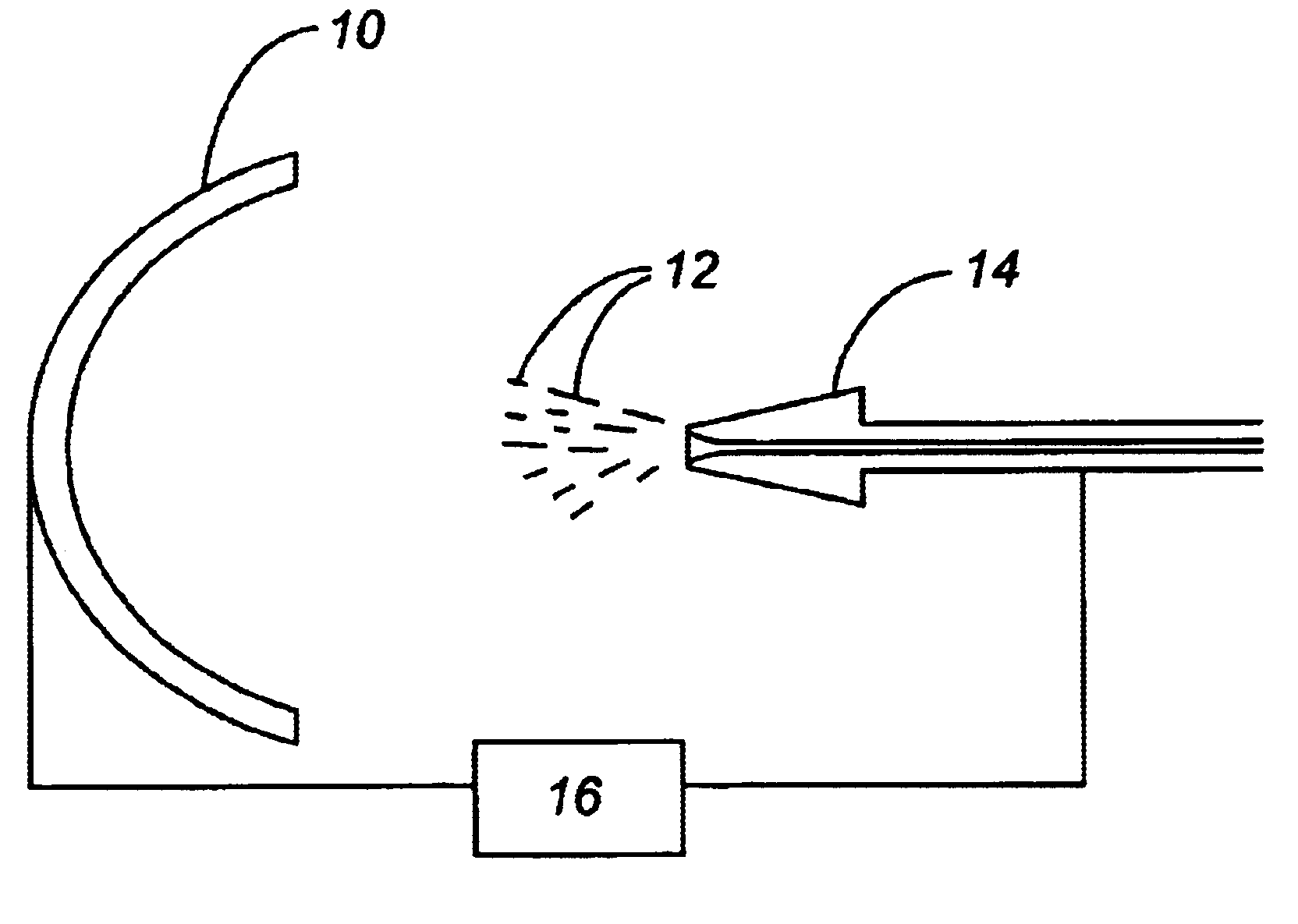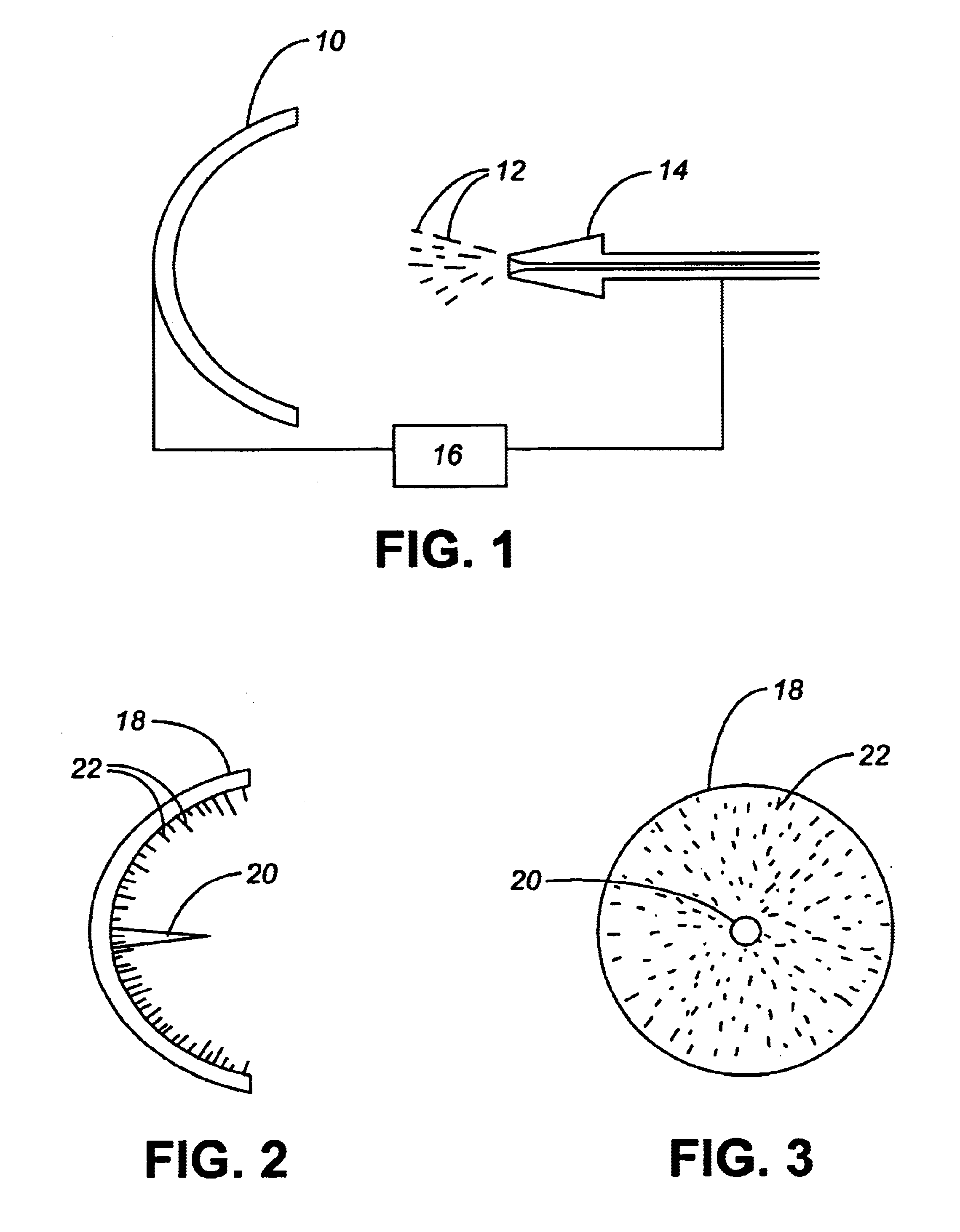Ultrasonic process for autocatalytic deposition of metal on microparticulate
a microparticulate, ultrasonic technology, applied in the direction of liquid/solution decomposition chemical coating, mechanical vibration separation, physical treatment, etc., can solve the problems of uncoated, clumping and flaking of silver, and "dead zones" where no metal application is possibl
- Summary
- Abstract
- Description
- Claims
- Application Information
AI Technical Summary
Benefits of technology
Problems solved by technology
Method used
Image
Examples
example 1
Multi-Phased Shifted Ultrasonic Travelling Wave Ion Stimulation for Effective Autocatalytic Deposition of Silver onto Kevlar Microparticles at Resonance Frequency Vibration
The process according to the invention allows control and acceleration of the transfer rate of ionic silver onto sensitized microparticulate material in such a manner that permits uniform silver deposition, thus controlling the depositional thickness and eliminating problems resulting from clumping. This process also permits the effective de-gassing of the autocatalytic medium, eliminating problems associated with depositional voids. In turn, the thickness and quality of the silver deposition on the microparticulate controls the level of conductivity designated for the end product This process works two fold; such that the sensitized material is in motion perpendicular to the motion of the silver solution, which in turn is actively in motion by a second alternating phase shifted frequency at resonant vibration fre...
example 2
Polarized Application of Metallized Microparticulate onto a Surface
In order to apply metallized microparticulate onto a surface, any variety of methods may be employed.
FIG. 1 illustrates application of silverized microparticulate onto a surface. In this example, a parabolic dish (10) provides an appropriate object target for application of metallized microparticulate in the form of silverized fibers (12) of varying lengths. A discharge nozzle (14) having an inert carrier gas (such as Ar, N.sub.2, He, etc.) travelling therethrough delivers the silverized fibers to the surface of the parabolic dish. The parabolic dish may optionally be pre-treated with a resin layer (such as an epoxy) to ensure that the fibers become lodged onto the surface of the dish. In order to orient the fibers end-on so as to be approximately perpendicular to the dish, an electrostatic charge generator (16) can be used to oppositely charge the dish (10) and the discharge nozzle (14). In this way, as the fibers a...
example 3
Combined Felted and Polarized Application of Metallized Microparticulate Onto a Surface
In order to apply metallized microparticulate onto a surface that required different types of metal coverage, any layered technique may be employed
FIG. 4 illustrates the front view of a flat surface (28) on which metallized microparticulate fibers (30) of varying sizes and lengths formed according to the methodology described herein, have been "felted". By "felted" it is meant applied in a random or unorganized fashion. This layer has not been polarized to effect an end-on orientation. In order to ensure adherence of the felted fibers to the surface, a resin layer may be included on the surface prior to application of the microparticulate. After application of the felted layer of metallized microfibers, a subsequent layer of polarized metalized microfibers is applied, using an apparatus such as that shown in FIG. 1.
FIG. 5 illustrates a flat surface (28) having a resin layer (32) coated thereon, fo...
PUM
| Property | Measurement | Unit |
|---|---|---|
| Thickness | aaaaa | aaaaa |
| Electric charge | aaaaa | aaaaa |
| Frequency | aaaaa | aaaaa |
Abstract
Description
Claims
Application Information
 Login to View More
Login to View More - R&D
- Intellectual Property
- Life Sciences
- Materials
- Tech Scout
- Unparalleled Data Quality
- Higher Quality Content
- 60% Fewer Hallucinations
Browse by: Latest US Patents, China's latest patents, Technical Efficacy Thesaurus, Application Domain, Technology Topic, Popular Technical Reports.
© 2025 PatSnap. All rights reserved.Legal|Privacy policy|Modern Slavery Act Transparency Statement|Sitemap|About US| Contact US: help@patsnap.com



